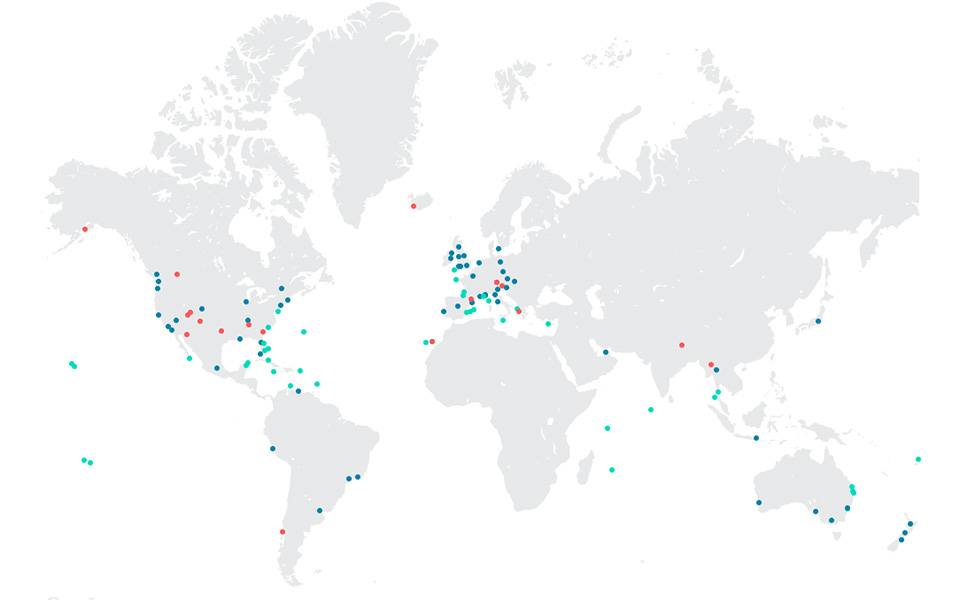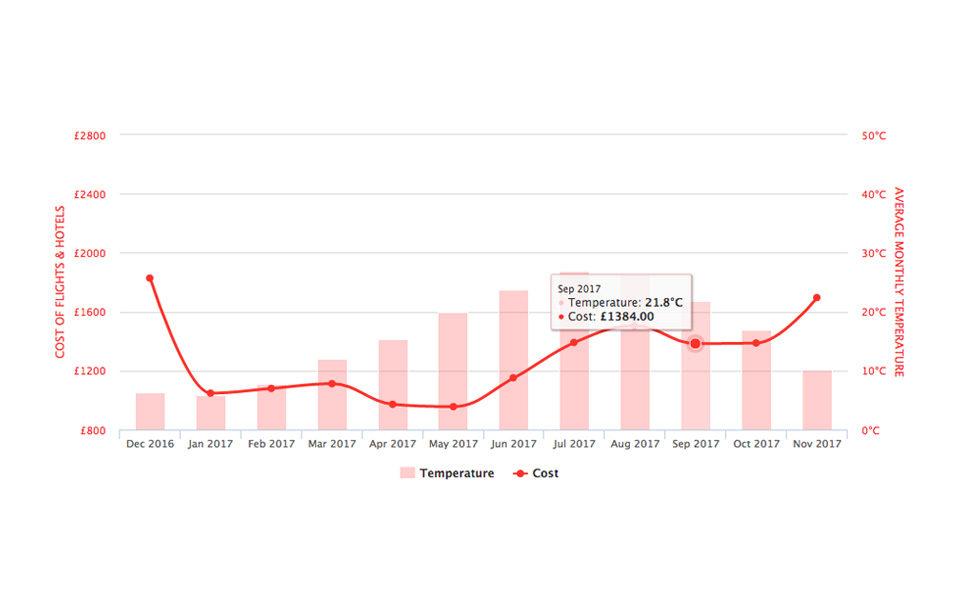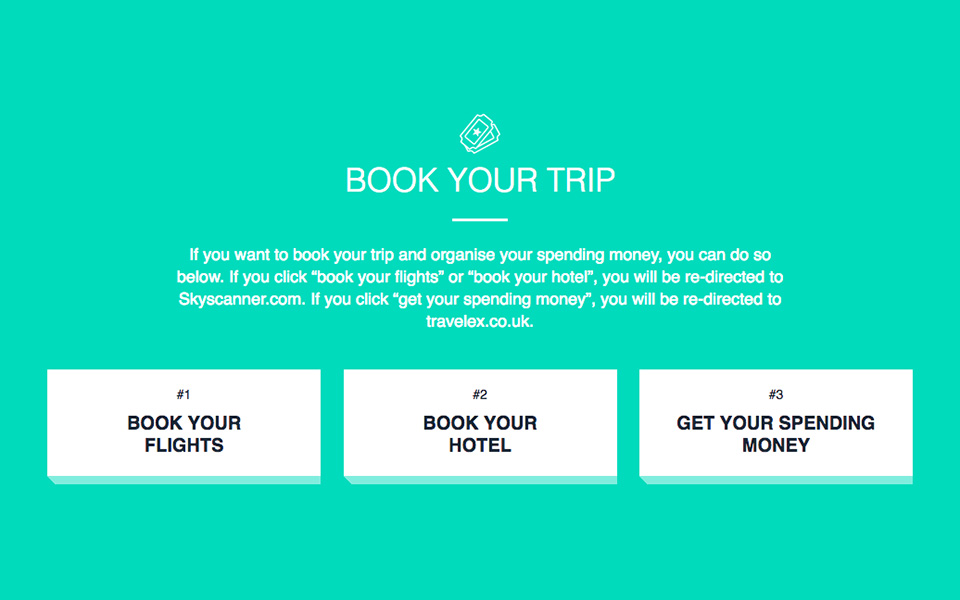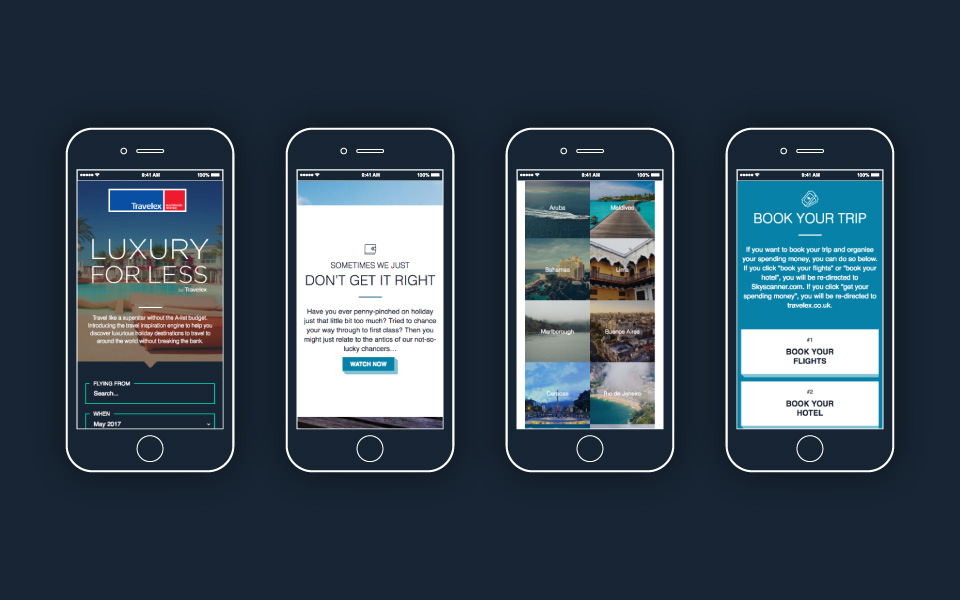



Luxury for Less was the second original project I developed for Travelex as part of the Labs team at Hotwire. It sat in the middle of a 12-month cycle of projects—including Next Great Travel Writer—designed to drive new traffic and backlinks to their domain and boost SEO performance.
Luxury for Less was developed as the next evolution of the low-cost travel search engine—something we felt consumers were ready for. Unlike services focused purely on getting away for as little money as possible, this was an inspiration engine for travellers who still wanted luxury, just at the best value. With Travelex on board, we were able to integrate features that others couldn’t—like expected spending money and real-time exchange rates—right into the experience.
Travelex asked us to create a brief to meet the goal of driving traffic to their domain. After collaborating with their internal stakeholders, we developed a reverse brief for Luxury for Less. The key was building something genuinely useful to both new and existing customers—something that made visiting the Travelex site a no-brainer when planning a holiday. We saw the best opportunity in offering a free, high-utility service that gave people real value every time they used it.
We took inspiration from the success of cheap flight and holiday search engines, but aimed to solve two key problems. First, these tools often prioritised cost-cutting at the expense of comfort and experience. Second, they didn’t factor in spending money or beneficial exchange rates when recommending destinations. That became our USP.
We pitched a service that would help people discover luxury holiday destinations within a budget—including flights, accommodation, exchange rates, and spending money. It was a unique product. While we had a tight timeline and couldn’t build a full booking engine (not part of Travelex’s business model), we focused instead on building an inspiration engine. We knew we couldn’t outbook Skyscanner, so we brought them in as a partner and positioned Travelex’s bureau de change alongside them.
Once the idea was signed off, we had eight weeks to design, develop, and deliver it. I took on the role of product designer and art director for the remainder of the project—architecting, wireframing, and prototyping the full site and experience.
To create our index of destinations, we commissioned surveys of 2,000 people worldwide to name their favourite luxury city and beach break locations. That gave us 101 destinations, which we expanded with 19 curated picks for active lifestyle holidays. The destinations were ranked by their popularity in the survey results.
One feature I developed looked beyond popularity and focused on what actually matters to different travellers. I wanted people to be able to choose destinations based on specific measures of luxury that matter to them—like the cost of a mid-range bottle of wine or the average temperature for the month they wanted to travel. For each destination, we researched six data points: three universal and three tailored to the holiday type.
We combined this with regional average spending data from Travelex and fulfilled the travel logistics using Skyscanner's data for flights and hotels.
The design was based on a set of evolving guidelines developed to help reposition Travelex as a more premium brand. This approach suited the art direction of Luxury for Less perfectly, allowing me to introduce considered visual touches and generous white space to convey a sense of luxury throughout.



